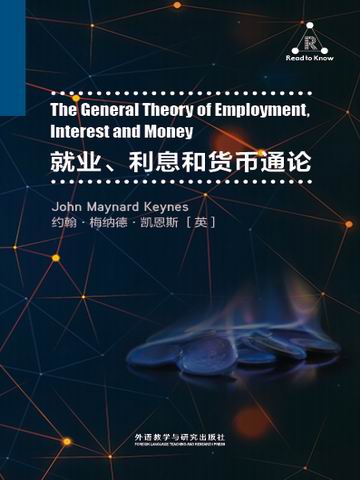当资本主义一片萧条时,看本书是如何带领资本主义摆脱困境的。
Regarded widely as the cornerstone of Keynesian thought, the book challenged the established classical economics and introduced important concepts such as the consumption function, the multiplier, the marginal efficiency of capital, the principle of effective demand and liquidity preference.
《就业、利息和货币通论》是凯恩斯的代表,于1936年出版,是凯恩斯的代表作,标志着凯恩斯主义这一独立的理论体系的形成。《就业、利息和货币通论》的核心问题是如何解决就业,以缓解市场供求力量失衡的问题。
The book, generally considered to be his magnum opus, is largely credited with creating the terminology and shape of modern macroeconomics. Published in February 1936, it sought to bring about a revolution, commonly referred to as the "Keynesian Revolution", in the way economists thought, especially in relation to the proposition that a market economy tends naturally to restore itself to full employment after temporary shocks.
- PREFACE
- PREFACE TO THE GERMAN EDITION
- PREFACE TO THE JAPANESE EDITION
- PREFACE TO THE FRENCH EDITION
- Chapter 1 THE GENERAL THEORY
- Chapter 2 THE POSTULATES OF THE CLASSICAL ECONOMICS
- Chapter 3 THE PRINCIPLE OF EFFECTIVE DEMAND
- Chapter 4 THE CHOICE OF UNITS
- Chapter 5 EXPECTATION AS DETERMINING OUTPUT AND EMPLOYMENT
- Chapter 6 THE DEFINITION OF INCOME, SAVING AND INVESTMENT
- Chapter 6a: Appendix on User Cost
- Chapter 7 THE MEANING OF SAVING AND INVESTMENT FURTHER CONSIDERED
- Chapter 8 THE PROPENSITY TO CONSUME:
- Chapter 9 THE PROPENSITY TO CONSUME:
- Chapter 10 THE MARGINAL PROPENSITY TO CONSUME AND THE MULTIPLIER
- Chapter 11 THE MARGINAL EFFICIENCY OF CAPITAL
- Chapter 12 THE STATE OF LONG-TERM EXPECTATION
- Chapter 13 THE GENERAL THEORY OF THE RATE OF INTEREST
- Chapter 14 THE CLASSICAL THEORY OF THE RATE OF INTEREST
- Appendix to Chapter 14 APPENDIX ON THE RATE OF INTEREST IN MARSHALL'S *PRINCIPLES OF ECONOMICS,* RICARDO'S *PRINCIPLES OF POLITICAL ECONOMY,* AND ELSEWHERE
- Chapter 15 THE PSYCHOLOGICAL AND BUSINESS INCENTIVES TO LIQUIDITY
- Chapter 16 SUNDRY OBSERVATIONS ON THE NATURE OF CAPITAL
- Chapter 17 THE ESSENTIAL PROPERTIES OF INTEREST AND MONEY
- Chapter 18 THE GENERAL THEORY OF EMPLOYMENT RE-STATED
- Chapter 19 CHANGES IN MONEY-WAGES
- Chapter 20 THE EMPLOYMENT FUNCTION
- Chapter 21 THE THEORY OF PRICES
- Chapter 22 NOTES ON THE TRADE CYCLE
- Chapter 23 NOTES ON MERCANTILISM, THE USURY LAWS, STAMPED MONEY AND THEORIES OF UNDER-CONSUMPTION
- Chapter 24 CONCLUDING NOTES ON THE SOCIAL PHILOSOPHY TOWARDS WHICH THE GENERAL THEORY MIGHT LEAD
- 书评 写书评
- 笔记
-
书评加载中...






















 京公网安备 11010802032529号
京公网安备 11010802032529号
笔记加载中...